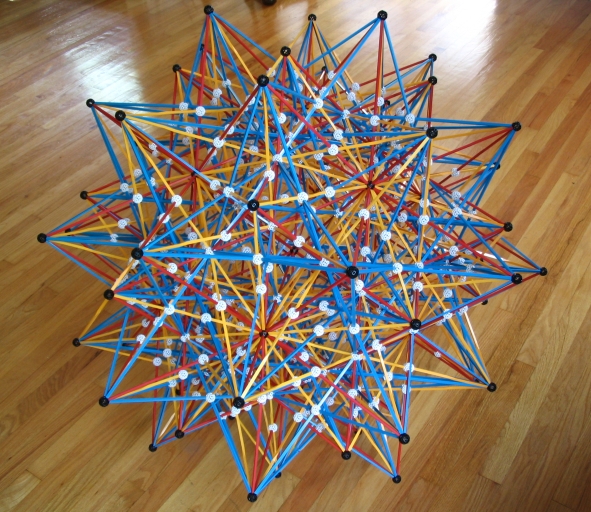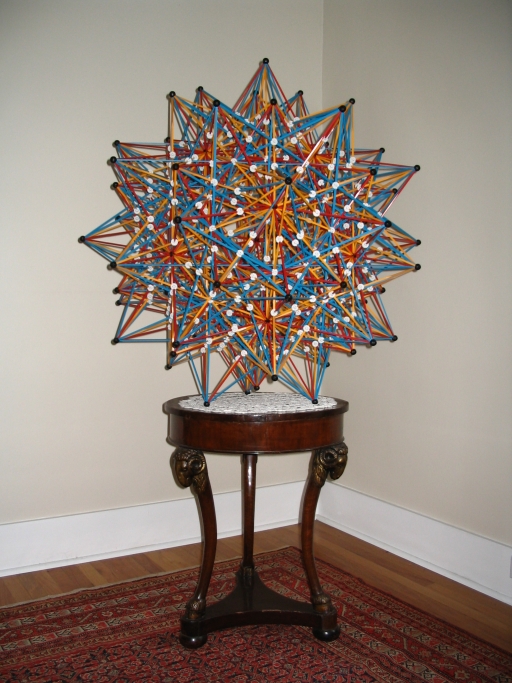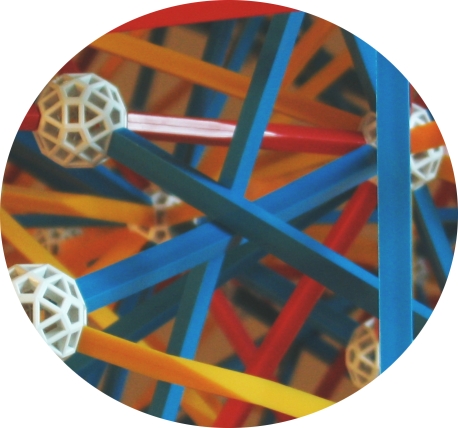A Zome Model

The Great 600-Cell, {3,3,5/2}
Introduction.
Here is a model of the regular polychoron, which, if following an analogue from 3 dimensions, could be called the "great 600-cell". The great 600-cell is an assembly of 600 regular tetrahedra in 4-dimensional space, arranged so that each edge is shared by 5 tetrahedra. The characteristic which distinguishes the great 600-cell from the "usual" 600-cell is that the vertex figure is the great icosahedron. (The vertex figure for the 600-cell is the regular icosahedron.) Notice that the Schläfli symbol here is {3,3,5/2}, indicating that the winding of the 5 tetrahedra around each edges has multiplicity 2, thus yielding a "pentagram" configuration.
More properly speaking, this is an "edge skeleton" of the great 600-cell. As it turns out, this
Zome model also serves as an edge skeleton for three other regular polychora. These others have
Schläfli symbols
One may recognize a sort of duality between these regular polychora and those with Schläfli symbols
One switches from one family to the other merely by interchanging "5" with "5/2".
Gosset's Polytope 421
One may conceive of this model by stellating each of the decagons in the 600-cell to the point where it becomes a {10/3} decagram. In so doing, one obtains a polytope containing not only the vertices of the "usual" 600-cell, but also those of the 600-cell which has been scaled up by the Golden Ratio. These vertices are represented by black balls in the Zome model. As it turns out, the edges which are present in this model are images of the edges of the quasicrystalline projection of Gosset's 8-dimensional semiregular polytope into 3-space.

The Model on a Ram's Leg Table
A Peculiarity
This model has 60 points where 3 blue struts must intersect. Unless one makes an impracticably large model, these are impossible to avoid, even with half-blue struts. We are lucky that the blue struts bend a lot:
A Triple Point
August 16, 2005
Reference.
H. S. M. Coxeter. Regular Polytopes. 3rd ed. Dover Publications Inc., New York, 1973.